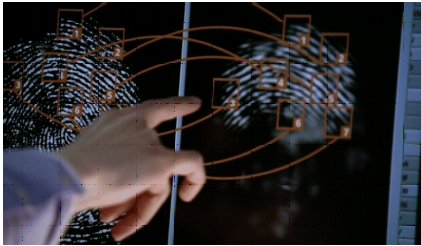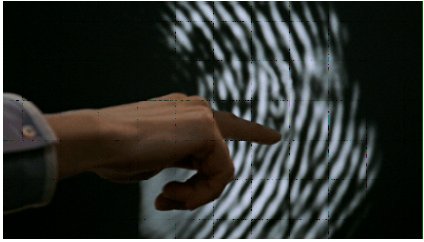| Direct confrontation of an expert and/or his/her assumptions rarely gets the expert to reconsider his/her assumptions. A much better approach is to provide data that challenges those assumptions, especially if the data are compelling. However, in the absence of the data, it is useful to help the user see the problem in another light. This point was well demonstrated in the first season of the television show, Numb3rs.*
In the episode, “Identity Crisis,” Charlie challenges the fingerprint technician’s identification of the print. As you might suspect, the technician – who considered herself an expert – was annoyed by the challenge, and proceeded to explain why her identification was correct. She makes a compelling case that she is correct by explaining how she found seven points of similarity between the partial print (on the right) and the suspect’s thumb (see first image).
The technician’s annoyance and unwillingness to reconsider her decision is a typical response from experts who are challenged by individuals whom they perceive to have less experience in their field. Direct confrontation rarely works to get them to question their assumptions. Having recognized this, Charlie moved to a new approach of providing her an alternative way of looking at the situation. He posed the question of considering the print not as a thumb print (which she explains it to be), but as a forefinger print. He discussed how items look different based on how we look at it and actually rotated the print to demonstrate his point. This is shown below. He encouraged her to examine the print in this new way to question the original identification. Charlie further noted that we have no database of the similarity of partial forefinger prints of people to partial thumb prints of other people and so do not know if they really can be similar (in comparison to the fact that we have data to suggest that no two people have the same set of finger prints.


*The television show,Numb3rs, chronicles an FBI office’s efforts to solve major crimes in Southern California. What makes the show different is that the head of the office, Don, has a brother, Charlie, who is a brilliant mathematician and who frequently consults with the FBI to solve cases. Generally it is the use of his higher level mathematics that gives the FBI the “edge” it needs to solve a case. Sometimes, though, it is his use of logic (a basic mathematical tool) that helps.
|